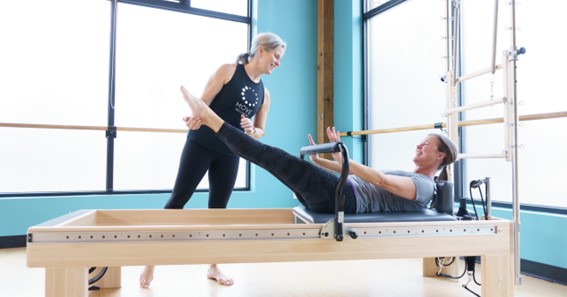In today’s fitness-focused world, there are many treatments available to help patients achieve their health and wellness goals. Two popular options that often come up in discussions are Pilates and physical therapy – but are they the same thing?
While both Pilates and physical therapy can contribute to overall fitness and well-being, they are distinct practices with different goals and methods. Let’s take a closer look at the differences between Pilates and physical therapy and understand why they aren’t quite the same but how they can complement each other.
Pilates And Physical Therapy – What’s The Difference?
Pilates and physical therapy are often grouped together when it comes to fitness and health. However, there are distinct differences between the two therapies that makes each of them unique.
Physical Therapy
Physical therapy is a healthcare profession that aims to improve physical function, reduce pain, and enhance mobility. Physical therapists are licensed healthcare professionals who are required to undertake extensive tertiary study to gain a degree in physical therapy.
Using this training, physical therapists can evaluate and treat a wide range of musculoskeletal and neurological conditions. They use various techniques and modalities such as manual therapy, education, and therapeutic exercises – such as Pilates – to help patients recover from injuries or manage chronic conditions. Our physical therapists at Ironhorse Physical Therapy and Pilates provide these services to promote optimal well-being and health for our patients in the San Ramon area.
Pilates
Pilates is a form of controlled movement exercise that focuses on strengthening the core, improving flexibility, and enhancing overall body awareness. It emphasizes movement control, proper alignment, and breath work, all aimed at improving posture, balance, and muscle tone.
Many different studios and community hubs offer Pilates, led by instructors with varying levels of training and experience. While these Pilates instructors are knowledgeable about movement principles and can guide clients through exercises, it’s important to note that they are not licensed healthcare professionals like physical therapists. Physical therapists have additional clinical training and experience in Pilates that allows them to assess and treat specific musculoskeletal conditions, tailor treatment plans, and make adjustments based on patient progress and limitations.
Clinical Pilates
Clinical Pilates is led by a qualified physical therapist, and is commonly used after an injury, surgery, or for general health and fitness. Physical therapists prescribe each Pilates exercise to meet the individual needs of the patient. Clinical Pilates is often performed on specialized equipment, such as reformers, and can also be done on a mat. Ironhorse Physical Therapy and Pilates offers physical therapy-led Pilates at our studio in San Ramon, CA.
Complementing Therapies
While Pilates and physical therapy may have different origins and approaches, there are instances where they can complement each other. In fact, many physical therapists incorporate Pilates-based exercises into their treatment plans to enhance patient outcomes. The strengthening, flexibility, and body awareness benefits of Pilates can support the rehabilitation process and help patients regain functionality. Physical therapists commonly run Pilates exercise classes for rehabilitation, injury prevention, and general health or fitness.
Clinical Pilates For Rehabilitation
Patients recovering from an orthopaedic surgery, such as a knee or hip replacement, can benefit from both physical therapy and Pilates. The surgeon may recommend a consultation with a physical therapist to promote recovery. After a thorough assessment, the physical therapist may prescribe Pilates exercises to help restore strength and stability, alongside other treatments. The controlled and low-impact nature of Pilates exercises makes them suitable for those with joint issues or those transitioning from physical therapy to independent exercise.
Clinical Pilates For Injury Prevention
Moreover, Pilates can be an excellent option for individuals seeking to prevent injuries or manage chronic conditions. The emphasis on core strength and proper alignment can help improve posture, alleviate pain, and enhance overall body mechanics. Physical therapists often recommend Pilates exercises to patients with or at risk of conditions like low back pain or postural imbalances.
Clinical Pilates For General Health And Fitness
Pilates led by a physical therapist is also ideal for patients seeking to improve or maintain their health and fitness. Physical therapists will prescribe the Pilates exercises based on the goals of the patient, whether it’s to improve fitness for an upcoming event, keep up muscle and bone health, or prevent falls for older adults.
Physical Therapy And Pilates At Ironhorse In Sam Ramon, CA
Pilates and physical therapy are distinct therapies, but they can complement each other in many ways. Physical therapists may use Pilates to address specific injuries or conditions, capitalising on the many benefits of Pilates that include rehabilitation, injury prevention, and long-term health.
Come see the physical therapy in San Ramon, CA, to discover the benefits of our Pilates service for overall health and wellness.
